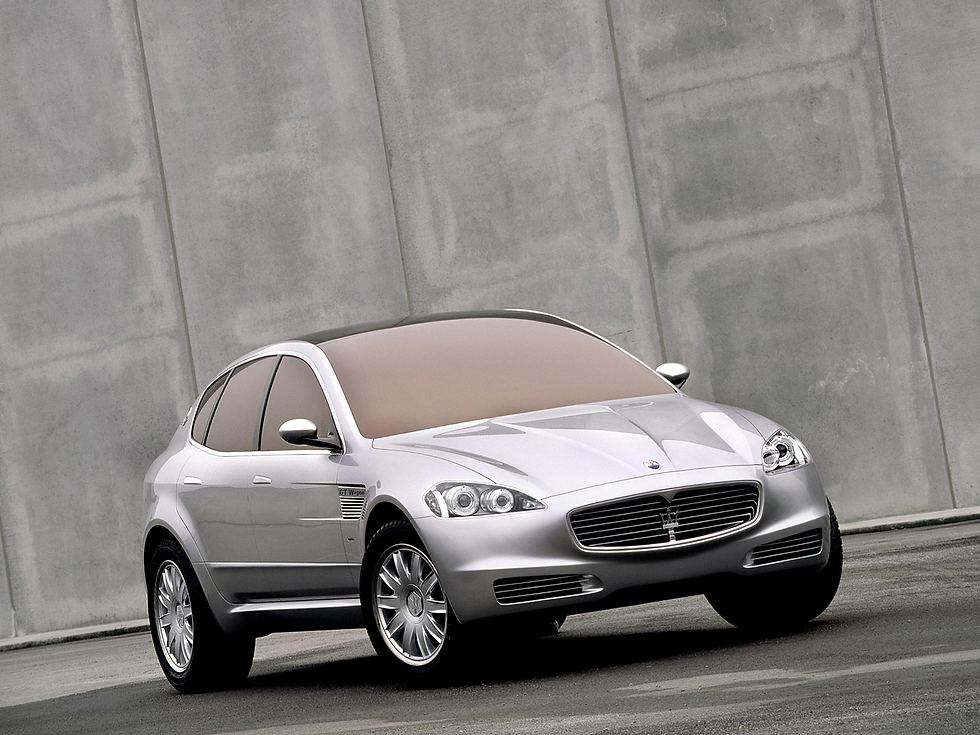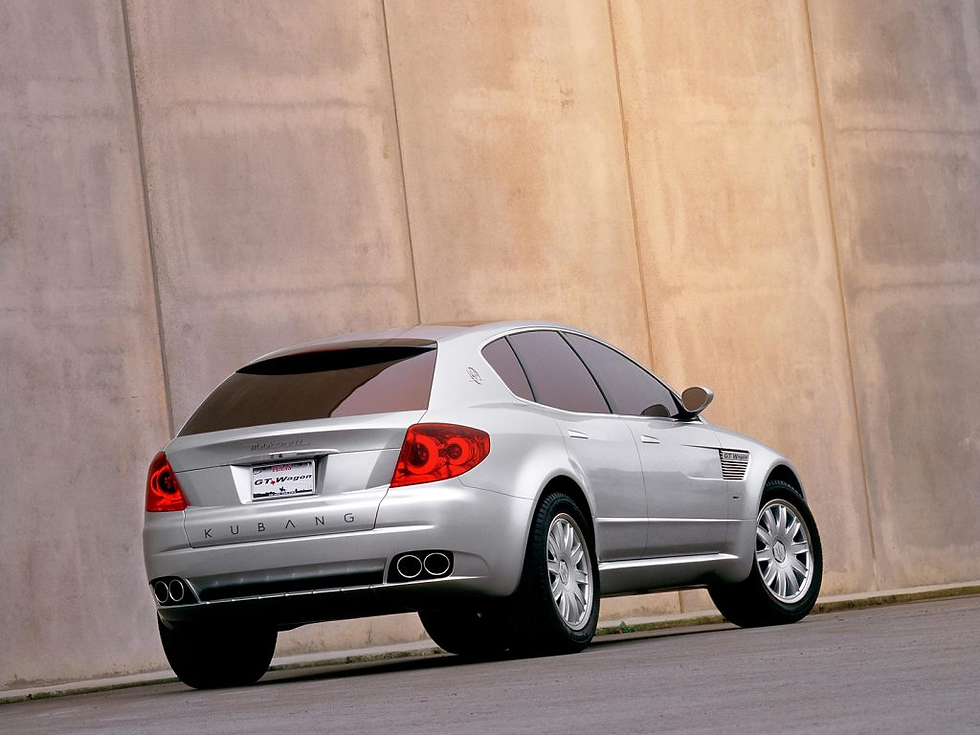
The 2003 Maserati Kubang GT Wagon, designed by Italdesign and Giorgetto Giugiaro, represented Maserati’s daring entry into the SUV segment. Introduced at the Detroit Auto Show, the Kubang concept aimed to fuse Maserati's GT sportiness with the practical utility of a wagon, crafted for drivers who appreciate both luxury and versatility.
Named after a Javanese wind, the Kubang embodied Maserati's tradition of blending elegance with power. Giugiaro approached the SUV concept with the goal of enhancing driving pleasure and stability, creating a low center of gravity vehicle with a distinctive 48/52% front-to-rear weight distribution for improved balance. Built on the Audi A8’s floorplan, the Kubang’s design prioritized agility, achieving a center of gravity positioned 100 mm lower than typical SUVs.

Equipped with a 3.2-liter twin-turbo V8 engine borrowed from the Maserati 3200 GT, the Kubang generated 368 horsepower. A six-speed automated manual transmission with electro-hydraulic control paired with full-time 4-wheel drive provided precise handling and ample power. Unlike traditional off-roaders, the Kubang focused on Maserati’s GT driving philosophy, optimizing for performance on paved roads rather than rough terrains.
Inside, the Kubang emphasized luxury and adaptability, seating five occupants in a standard layout or four in an "Executive" configuration. Maserati added an optional third row, allowing for seven seats. The interior offered personalization options through Maserati’s "Officine Alfieri Maserati" program, allowing buyers to tailor the cabin's finishes and advanced electronics to their taste.

Practicality was central to the Kubang’s design, with a trunk capacity of 1,500 liters for ample cargo space. Maserati designed the rear hatch with a split-opening mechanism: an upper section that lifted from the roofline and a lower section that flipped down, simplifying loading and unloading.
Although the 2003 Kubang GT Wagon remained a concept, it laid the groundwork for Maserati’s entry into the luxury crossover market. The Kubang’s influence ultimately materialized with the Maserati Levante, the brand's first production SUV introduced in 2016, and marked a pivotal point in Maserati’s evolution toward combining high-performance GTs with the adaptability of an SUV.


























